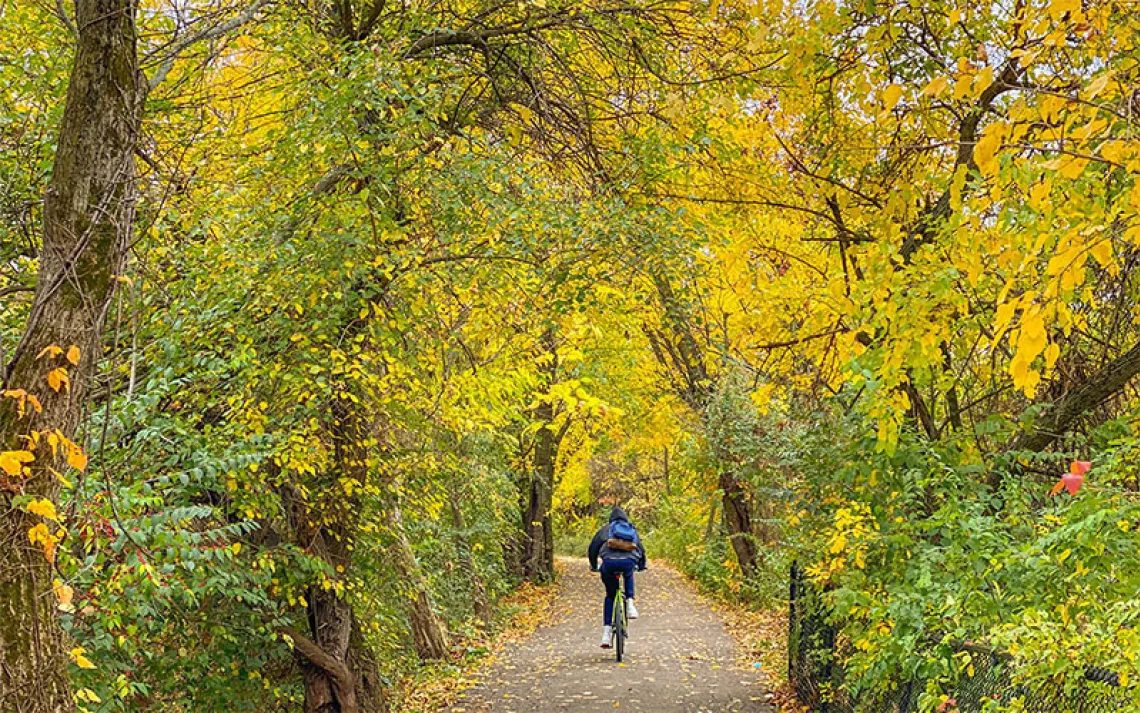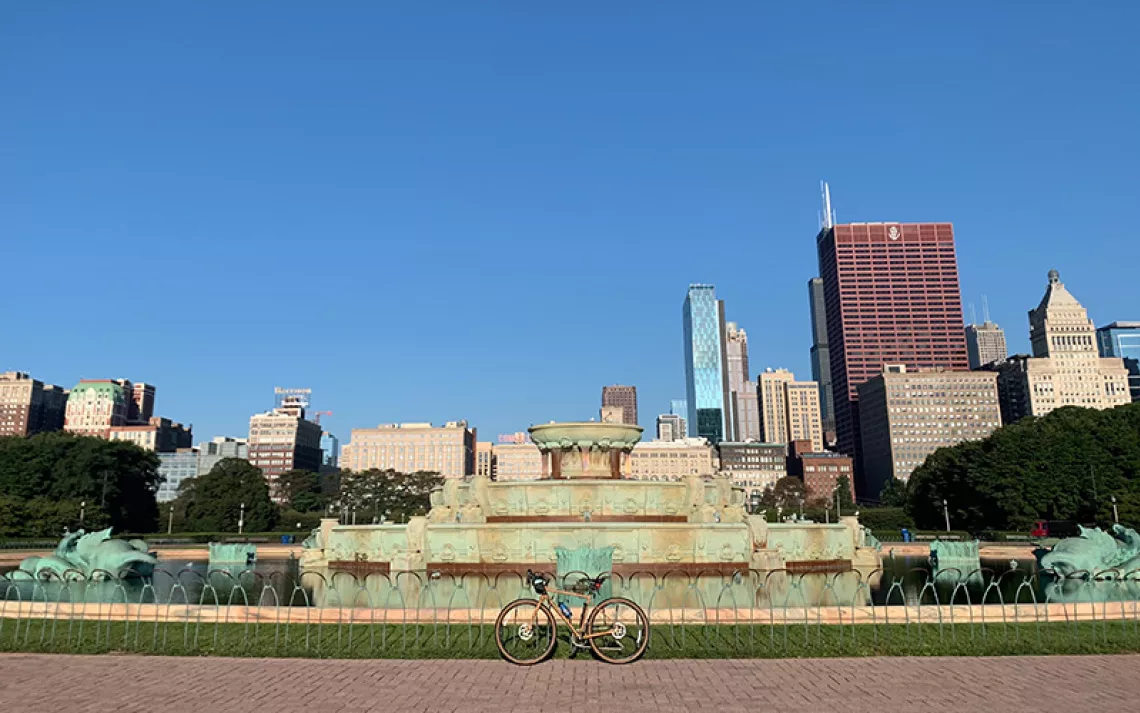Cycling Can Save the World
In case you needed another excuse to get on your bike

Photo by iStock/JasonJiron
A brisk 3-mile ride on my commuter bike got me to the doctor's office this morning; and this afternoon I'll ride half a mile to the supermarket, sparing myself the famous congestion of its parking lot. In lots of cities worldwide—not only Copenhagen and Amsterdam, but Davis, California, York, England, and many cities in India and China—cycling already accounts for more than 15 percent of trips. If we could boost that number to a high (but achievable!) 23 percent worldwide, says the Institute of Transportation Studies at the University of California, Davis, we could save 300 megatonnes of carbon dioxide and the equivalent of a cumulative $24 trillion between now and 2050. Thus, according to their report, "cycling can have a substantial positive impact on the world's future."
Twenty-three percent of trips by bikes may be doable, but for most cities it's still a long way off. (On average in the United States and Canada, only 1 percent of trips are made by bike; the worldwide average is 6 percent.) How to get from here to there? The authors say it will take some major policy changes at various levels of government. Some are what you might expect (implement bike-sharing programs where they don't already exist, repeal policies that encourage motor vehicle use, like fuel subsidies and free on-street parking), while others are less so. For example, the authors recommend a major role for electric bicycles or e-bikes.

Electric bicycles (e-bikes) provide a wide range of benefits, which include increasing the range of potential travel distances, reducing cycling effort in hilly cities, and providing mobility to population groups that are not entirely comfortable using bicycles.
Another recommendation: "Rapidly develop cycling and e-bike infrastructure on a large scale." You know what that means, don't you? In addition to much else: protected bike lanes.
Learn More
Check out the infographic that went along with the report (courtesy of the Institute for Transportation and Development Policy):
 The Magazine of The Sierra Club
The Magazine of The Sierra Club



